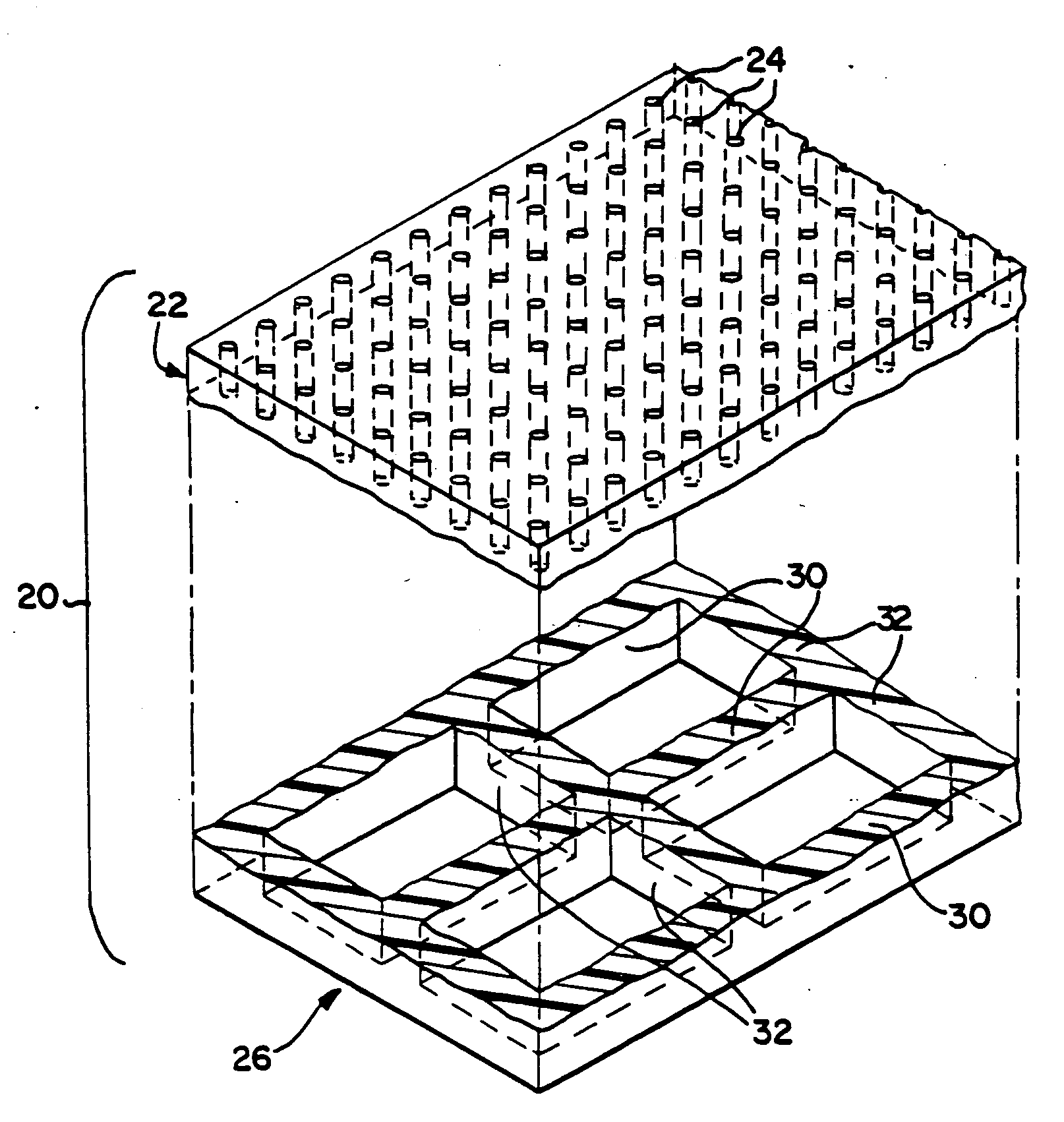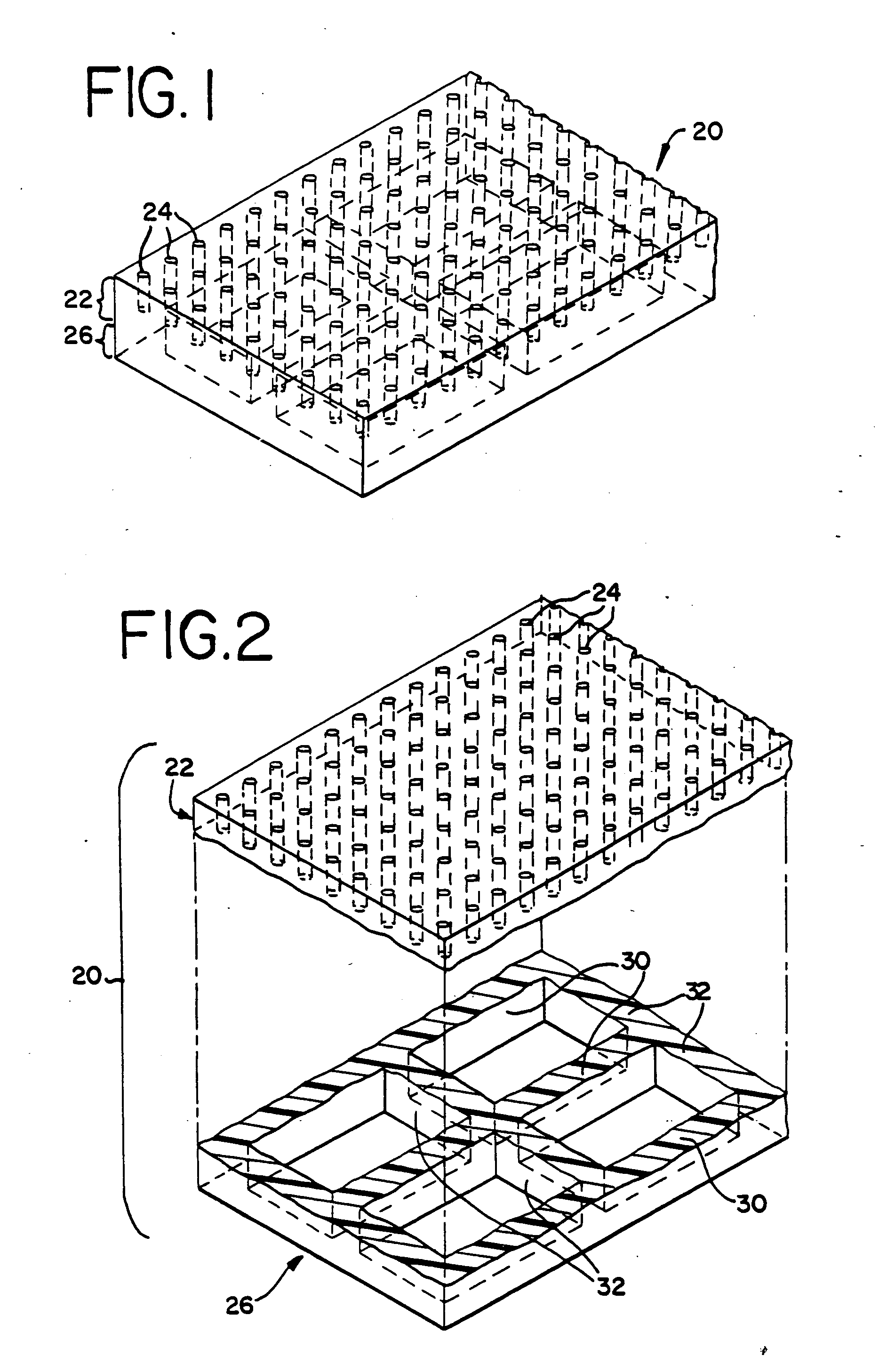Microporous filter membrane, method of making microporous filter membrane and separator employing microporous filter membranes
a filter membrane and microporous technology, applied in metal-working equipment, chemical/physical processes, dispersed particle filtration, etc., can solve the problems of limited porosity, reduced flow rate, and filters with micron or smaller pores, but often have significant limitations. , to achieve the effect of high porosity
- Summary
- Abstract
- Description
- Claims
- Application Information
AI Technical Summary
Benefits of technology
Problems solved by technology
Method used
Image
Examples
Embodiment Construction
[0065]FIG. 1 depicts a microporous polymeric filter membrane, generally at 20, embodying the present invention. In accordance with the present invention, filter membrane 20 includes at least a filter layer 22 that includes a plurality of micron-scale precision-shaped pores 24, and a support layer 26 that includes a precision-shaped support structure (better seen in FIG. 2) for the filter layer, the filter and support layers being monolithic, in which there is no discernible line of distinction between the filter and support layers. As will be discussed in more detail later in connection with the method of making a membrane of the present invention, a monolithic membrane may be the result of forming the filter layer and support structure on opposite sides of a single film or forming the filter layer and support layer in different films that are either the same material or are different but sufficiently compatible material that they may be formed into a monolithic membrane, such as by...
PUM
| Property | Measurement | Unit |
|---|---|---|
| distance | aaaaa | aaaaa |
| width | aaaaa | aaaaa |
| width | aaaaa | aaaaa |
Abstract
Description
Claims
Application Information
 Login to View More
Login to View More - R&D
- Intellectual Property
- Life Sciences
- Materials
- Tech Scout
- Unparalleled Data Quality
- Higher Quality Content
- 60% Fewer Hallucinations
Browse by: Latest US Patents, China's latest patents, Technical Efficacy Thesaurus, Application Domain, Technology Topic, Popular Technical Reports.
© 2025 PatSnap. All rights reserved.Legal|Privacy policy|Modern Slavery Act Transparency Statement|Sitemap|About US| Contact US: help@patsnap.com



